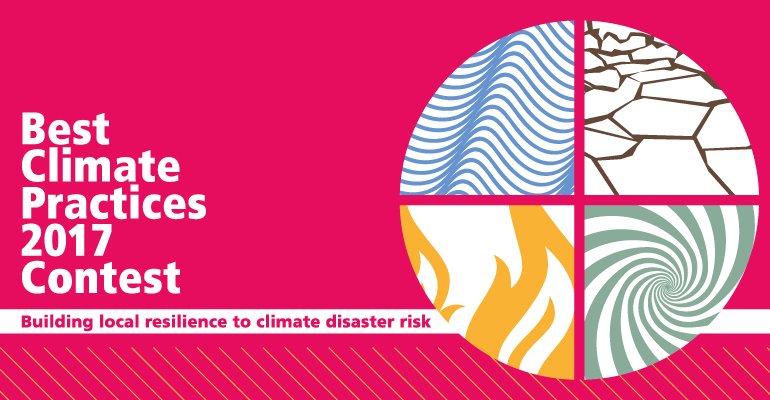On November 8th, in conjunction with the first week of COP23 and within the context of the “ICCG Climate Week”, ICCG organises a webinar dedicated to the Best Climate Practice Award, to showcase the most innovative and compelling projects that have participated in the 2017 edition of the contest and to explore the landscape and challenges of climate resilience and disaster risk reduction strategies.
After the online voting polls closed in July and the assessment of a jury composed of high-profile experts analysing the 19 shortlisted projects in the run, on the occasion of the International Day for Disaster Reduction, ICCG announced that the project “Balangay Legazpi” is the winner of the contest.
Legazpi City (capital of the province of Albay in the Philippines) is known for its adaptation and disaster risk reduction strategies, being highly vulnerable to natural hazards such as typhoon, earthquake, landslide, volcanic eruption, floods and tsunami. In order to sustain the disaster-risk reduction and management (DRRM) initiatives and to bridge the information gap between vulnerable communities and disaster-preparedness information providers, Balangay is a disaster-preparedness mobile and web application that provides communities information before and during the disaster. It is a public resource that provides to citizens disaster-related information, preparing families for earthquakes, floods and typhoons.
The main feature of the project is its user-centred approach. Before starting the project, potential users have been asked about what they dislike and why they use/don’t use similar technology-based initiatives. Official accounts are given to partner institutions and youth, engaged through local youth hobbyists who are tapped as volunteers to assist and create the promotional materials. Moreover, the local government issued accounts to barangays (smallest administrative divisions in the Philippines) to let them post announcements and information about their barangay activities.
The collaboration between local government units, academy, private sector, civil society organizations (CSOs), non-government organizations (NGOs) and affected communities strongly strengthens disaster education and bridges general information gap.
The role of youth (around 40 percent of the total population) is also enhanced by the structure of the application: they result both as the creators of information and materials and as end-users of the system, acting as information leaders in the family. A strong sense of ownership is developed, resulting in stronger engagement and higher and sustained user-base.
Statistics of the web and mobile application are very promising: 230 average daily visits from May 2016 to the first quarter of 2017 and 300 application downloads (exceeding the initial target of 199). In October 2016 it played a very important role during the Tropical Storm Karen, providing users rainfall advisory and updates. The project is also expected to growth in the future, with a projected increase of 10 to 15 percent per month in 2018.
More information about this project and many other good practises from all over the world are available on the Best Climate Practices platform, where the best ground-breaking climate-friendly practices are presented: just take a look at the official web site http://www.bestclimatepractices.org/.



